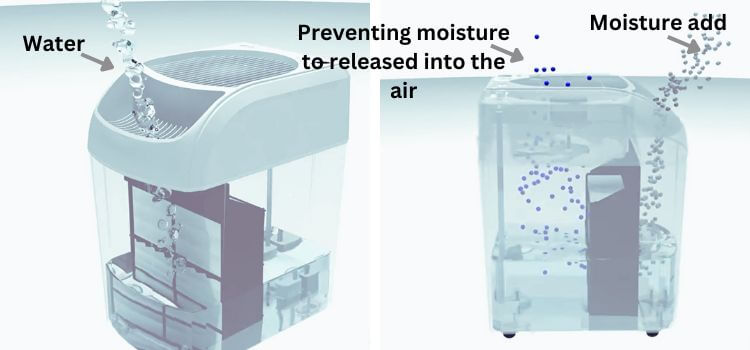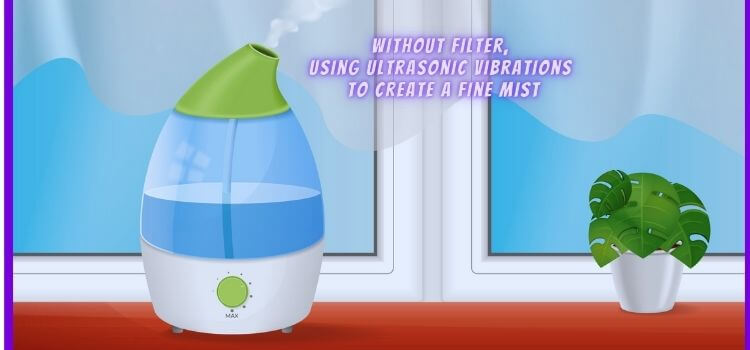Humidifiers keep an indoor environment comfortable and healthy. These actually add moisture to the air. Proper humidity levels not only prevent dry skin and respiratory issues but also help protect wooden furniture and reduce the risk of certain illnesses. When it comes to choosing a Humidifiers, two popular options are filter vs no-filter humidifiers.
We will compare these two types of humidifiers in this article. Their working mechanisms, advantages, and disadvantages will be explained. After that, you will be able to make the right decision for your needs.
Benefits of Using Humidifiers
Humidifiers offer a wide range of benefits, making them a valuable addition to any indoor space. Some of the key benefits of using humidifiers include:
irst_paragraph -->- Relief from Dry Air Symptoms: Humidifiers help alleviate dry skin, chapped lips, and irritated nasal passages caused by low humidity levels.
- Improved Sleep: Proper humidity levels can promote better sleep by reducing snoring and easing breathing during sleep.
- Healthier Plants: Indoor plants thrive in a more humid environment, and using a humidifier can enhance their growth and overall health.
- Protection for Wooden Furniture: Maintaining adequate humidity levels prevents wooden furniture and flooring from cracking or warping due to excessive dryness.
- Faster Healing: Humidifiers can aid in faster recovery from colds, flu, and respiratory infections.
- Reduced Static Electricity: Adequate humidity levels reduce static electricity, providing a more comfortable environment.
Filter Humidifiers: How Filter Humidifiers Work
Filter humidifiers, as the name suggests, utilize a filter or wick to absorb water from the unit’s reservoir. The air is then blown over the wet filter, causing the water to evaporate and add moisture to the air. These humidifiers are effective at trapping impurities and minerals present in the water, preventing them from being released into the air.

Types of Filter Humidifiers
- Wick-based Humidifiers: These humidifiers use a porous wick filter to draw water from the tank and allow it to evaporate into the air.
- Impeller Humidifiers: Impeller humidifiers use a high-speed rotating disk to break water into tiny droplets, which are then expelled into the air by a fan.
Pros and Cons of Filter Humidifiers
Filter humidifiers come with their own set of advantages and disadvantages. Let’s explore them in detail.
PROS
CONS
No-Filter Humidifiers: How No-Filter Humidifiers Work
No-filter humidifiers, also known as filter less humidifiers, employ alternative methods to add moisture to the air without the need for a filter. They may use ultrasonic vibrations or high-frequency sound waves to create a fine mist, dispersing it into the room. Some no-filter humidifiers also use a rotating disc to fling water at a diffuser, producing a fine mist.

Types of No-Filter Humidifiers
Ultrasonic Humidifiers: These humidifiers use ultrasonic vibrations to create a fine mist of water droplets, which are then expelled into the air.
Evaporative Humidifiers: Evaporative humidifiers blow air over a wet wick or filter, causing water to evaporate and add moisture to the air.
Pros and Cons of No-Filter Humidifiers
No-filter humidifiers also have their unique advantages and disadvantages. Let’s explore them in detail.
PROS
CONS
Which One Should You Choose?
In summary, the choice between an evaporative and steam humidifier, as well as a filter or no filter humidifier, depends on your specific needs, budget, and maintenance preferences. Evaporative humidifiers are generally more energy-efficient but require filter maintenance. Steam humidifiers are fast-acting but consume more electricity and pose burn risks.
Filter humidifiers can improve air quality but come with ongoing filter replacement costs, while no-filter humidifiers are simpler but may require more frequent cleaning due to mineral buildup.
Contemplate these key elements for a well-informed decision:
- Indoor Air Quality Concerns: If you are concerned about maintaining the best possible air quality, a filter humidifier might be the right choice, as it effectively removes impurities from the water.
- Low Maintenance: If you prefer a hassle-free maintenance experience, a no-filter humidifier may be more suitable due to its minimal cleaning requirements.
- Noise Sensitivity: For individuals who value quiet operation, a no-filter humidifier is preferable as it operates silently without the noise associated with fans.
- Energy Efficiency: If conserving energy and reducing electricity costs are priorities, consider opting for a no-filter humidifier, which typically consumes less energy.
Ultimately, both filter vs no-filter humidifiers can provide adequate moisture to the air and offer various health benefits. Before making a decision, assess your needs and weigh the pros and cons.
Conclusion
Filter vs no-filter humidifiers serve the essential purpose of adding moisture to indoor air, offering a range of benefits for health and comfort. Filter humidifiers excel in providing cleaner air by trapping impurities, while no-filter humidifiers boast low maintenance and quiet operation.
For a healthier and more comfortable indoor environment, invest in a quality humidifier that suits your needs best. Enjoy the benefits of improved air quality and say goodbye to dry air discomfort. Happy humidifying!
As an Amazon Associate, I earn from qualifying purchases
Leave a Reply